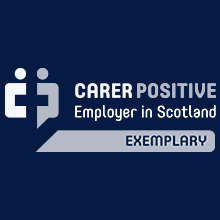Facial Pain referrals to Neurology – advice for primary care
Dept Clinical Neurosciences, NHS Lothian. 2021.
What are the common causes of facial pain?
Like headache, facial pain diagnoses are fundamentally based on history. Common causes are
| Persistent idiopathic facial pain (previously “atypical facial pain”). Usually constant unilateral and resistant to all medication. Similar patient profile to fibromyalgia and other chronic pain syndromes. |
| Migraine: facial pain is common as part of acute migraine |
| Trigeminal Neuralgia. Trigeminal neuralgia is the most common of the craniofacial neuralgias; characteristic history, 70% are over 60 yrs old, almost always unilateral (bilateral with alternating unilaterality very rare), typically V2 and V3 (cheek and jaw). Lancinating, stabbing, jolts of pain usually lasting seconds. Pain is spontaneous or triggered by simple stimuli such as touching, teeth brushing, talking/chewing. About half have underlying persistent facial pain. |
| Sinusitis: over diagnosed from a neurology perspective (usually migraine or persistent idiopathic facial pain). ENT in Lothian state that sinusitis ALWAYS includes one of nasal blockage, nasal congestion or nasal discharge. |
| Temporomandibular joint disorders (TMJ): usually associated with jaw movement |
| Oral/Dental structures/Salivary glands; usually intra-oral pain, occasionally facial pain |
| Temporal Arteritis. A rare but important cause of facial pain.usually in people >70 and rare in <60 yrs. Have a low threshold for checking ESR (usually >50) or CRP (>5). If suspected refer urgently to neurology |
When should I request CT head?
CT head in persistent idiopathic facial pain or migraine is not usually indicated.
For trigeminal neuralgia it may be reasonable to refer for assessment and subsequent MRI, if you think the patient may be a candidate for surgical treatment. If they are not and there are no other focal neurological symptoms or signs then reasonable to manage in primary care.
What treatments can I try in primary care – and when should I refer?
| Facial Pain Condition | Treatment | When to refer to Neurology |
| Persistent idiopathic facial pain (“atypical facial pain”). | Tricyclics – e.g. Amitriptyline, Nortriptyline | If no focal neurological symptoms or signs, refer to pain service |
| Migraine | As per migraine factsheet | Treatment resistant migraine only (3 preventative agents >3 months and appropriate acute treatment (see RefHelp guidance on Migraine) |
| Trigeminal Neuralgia | Carbamazepine is first line: 100mg bd, then tds and upwards depending on responseSecond line agents (poor evidence base) include lamotrigine, gabapentin, pregabalin, baclofen, phenytoinSurgical therapies: microvascular decompression or ablative procedures* | If not responding to carbamazepine, patient may be suitable for surgical treatment (refer Neurosurgery) If not suitable for Neurosurgery or diagnostic uncertainty refer to neurology |
| Facial pain not fitting with above descriptions | If mild consider tricyclic prior to referral | |
| Temporal Arteritis | Refer to on call neurology service if typical story and ESR and CRP high. | |
| Sinusitis/TMJ/Oral | Referral to ENT/Maxillofacial/Oral Surgery |
References:
Practical Neurology 2021;21:392-402. https://pn.bmj.com/content/21/5/392
Lancet Neurology 2006;5:257-67.
Jon Stone and Richard Davenport
Consultant Neurologists, NHS Lothian 2021
M.A & J.S. 15-12-22













